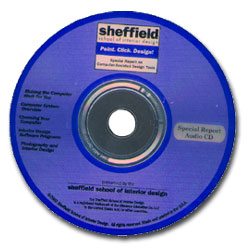As a writer who wants to publish great content, your focus should be on people first and search engines second. That said, it doesn’t hurt to know the ins and outs of search engine basics in order to make that second part count. In this post, we’re going to dive a little deeper into search engine basics and how you can use them to further your writing career.
What Is Search Engine Optimization?
Before you start learning about how search engine optimization works, you probably want to know why you should even care about it. Search engine optimization (SEO), in a nutshell, is the art of making your content discoverable by search engines and search engine users. You can’t just publish something and expect Google to start sending traffic to it. You need to give it a little boost with the following strategies.
SEO is applicable to any content you publish online, from blog posts, to social media profiles, to books on Amazon. If you want it to be discoverable in search engines, it needs a little SEO magic.
Keyword Research
The first step in optimizing for search is keyword research. You need to figure out what keywords people would search to find the content you have created, and then optimize your content for those keywords. Let’s take this article as an example. It covers search engine optimization and topics related to SEO, so we’ll take that and run it through Google AdWords Keyword Planner to see what other suggestions it has to offer.
In addition to getting the search volume for search engine optimization (22,200 average monthly searches), you will also find some additional suggestions that you can incorporate into your content. In this case, there were SEO tools (4,400 average monthly searches) and what is search engine optimization (1,300 average monthly searches).
On-site SEO
Once you have picked out a good set of keywords, you will optimize your content for those keywords. As you may have noticed, the keywords mentioned above — search engine optimization, SEO tools, and what is search engine optimization — have been incorporated into this article in the title of the post and two of the main headings within the post. These are key areas to add the keywords you would like to optimize with.
Another good place to optimize for search is in images. Take the image below.

This image can be optimized by using keywords in the filename (search-engine-optimization-basics.jpg) and in the alt text (alternate text) for the image (alt=”Search Engine Optimization Basics”). This can help subtly add more keyword optimization to your content and help your content rank in Google Image Search for the specified keyword as well.
Off-site SEO
In addition to the on-site optimization, you also have to think about off-site SEO. Off-site SEO generally refers to building links to your content. Links help your content get discovered by search engines and also tells search engines how popular your content is.
In the past, you were almost assured a good ranking in search by simply having the most links pointing to your content. This isn’t the case anymore. Now, there are many factors that contribute to how content ranks in search, including the domain’s overall authority. For instance, CNN has stronger authority than a brand new website. Other factors include the age of the content (sometimes newer content ranks better, but not always), and the author of the content.
Nonetheless, it doesn’t hurt to help your content rank well through building strong links to it. For example, if this post could get links from other reputable websites that pertain to SEO like Search Engine Watch, Search Engine Journal, Moz, and similar industry blogs, along with other blogs that also talk about SEO, it would stand a better chance of coming up in search results than if it had no links at all.
Search engines like Bing are also counting social shares from authority figures on a particular topic as a signal to base rankings upon. This is why the social promotion of your content on Twitter, Facebook, and Google+ is vital. If you know someone who is extremely influential on the topics you create content on, see if they’d be willing to share it with their audience. Social promotion also opens the door to discovery of your content by other websites who might also be willing to link to it.
Problems Caused By SEO
On-site and off-site optimization must be done carefully. Google has been taking a stand against low quality content and spam over the last several years, and any websites that they consider engaging in activities that are meant to manipulate search engine results could be affected by algorithm changes and manual penalties.
This is why you should think of all on-site and off-site SEO strategies with people in mind. Some tips to follow include the following.
- Write your content for your readers. Don’t try to over-optimize it by mentioning a keyword a dozen times more than it has to be said.
- Build links on sites that people who want to read your content visit. If you’re about to build a link that you don’t think anyone will click on, it’s not worth it.
- Don’t buy links, especially from people or services that say they can build 1,000 links to your content for $5. All they will do is build you spam links.
SEO Tools to Get Started With
One thing that can help in the process of learning how to use SEO is having the right tools. There are hundreds of tools that many SEO professionals turn to. Here are a few good starters to choose from.
Google Keyword Planner for Keyword Research (free) – Mentioned earlier, Google’s official keyword tool can help you discover new keyword ideas and see the estimated search volume to find out which ones are most popular.
Chrome SEO Site Tools for On-site Optimization(free) – Not sure how to optimize your website or content for a particular keyword? Add this extension to your Google Chrome browser and do a search on Google for the keyword you are trying to optimize for. Click through to the sites on the first page, and then click on the magnifying glass to the right of your address bar. You will see how the webpage optimizes for that keyword in their SEO title and meta description.
CognitiveSEO for Link Research (paid) – Not sure where to start when building links for your website and it’s content? This tool will allow you to look at links for a particular website or URL and see which ones are the strongest. This can give you a good idea about the types of links you can build and where to get them. It also has a built-in keyword ranking tracker that will tell you how your website is ranking for particular keywords.
Google Penalty Checker (free & paid) – If you think your website has been affected by a Google algorithm change or penalty based on a drop in traffic, this tool will confirm it. It will identify when the change occurred and what the cause could be.
Bonus Offer!: Want to learn how to apply these techniques to your blog? NYIAD’s Professional Blogging Course can help you get there! Enroll today!







